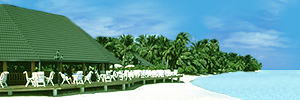



|
 |
 |
|
Alberta’s National Parks: Discover Wildlife, Hikes and Mystic Views
In this final installment of a two-part series on Alberta's five national parks, you'll discover several that aren't as well known as Banff and Jasper, though they are natural gems in their own right: Waterton-Glacier International Peace Park, Wood Buffalo and Elk Island. Like Banff and Jasper, these three national parks offer remarkable outdoor adventures, camping and lodging, along with fascinating history. You'll find these vast parks provide easy access to wildlife in areas that are unhurried, and in some cases, unheralded. These are the areas wilderness lovers seek. Discover UNESCO Sites Of these five national parks, three are UNESCO World Heritage sites: Banff, Jasper and Waterton-Glacier International Peace Park. UNESCO sites recognize (through the World Heritage Convention) natural habitats where threatened species of plants and animals still survive, as well as unique witnesses of lost civilizations (such as Head-Smashed-In Buffalo Jump in Alberta's south, where native peoples of the North American plains chased bison over a precipice to maintain their way of life). The fifth Alberta UNESCO site is Dinosaur Provincial Park. Other UNESCO sites in the world include Machu Picchu in Peru, the Taj Mahal in India and the Palace of Versailles in France. In order to see all five United Nations UNESCO World Heritage Sites in Alberta, you'd start in the far southwest corner of the province in Waterton-Glacier International Peace Park, which became the world's first International Peace Park in 1932 when Waterton Lakes National park joined Glacier National Park. Even if you don't make that drive (though it's a beauty), let's look at the park. Waterton-Glacier International Peace Park Made up of two national parks, Alberta's Waterton Lakes (about 525 sq. km or 203 sq. mi.; the tiniest park in the Rockies) and Montana's Glacier (4,050 sq. km or 1,564 sq. mi.), Waterton-Glacier International Peace Park "is exceptionally rich in plant and mammal species as well as prairie, forest, and alpine and glacial features," reports UNESCO. The drive into the park from the north is astounding, providing sweeping vistas of prairies that are guarded by robust mountains. A chain of deep glacial lakes buffets it; this gem of a park offers a wide variety of high-altitude day hikes and horseback riding adventures, along with many opportunities for viewing plants and wildlife. In many ways Waterton is like a mini-Banff, with 958 species of plants (175 species of rare plants, 30 of which are found only in the park) and some 45 distinct habitats crammed into it. Picture snow-capped mountains, rushing streams, grizzly bears, flowered meadows with no traffic jams or sushi joints, and you've got the adorably quaint town of Waterton. This park is also exceptional for its co-operative spirit which began in 1932, when the Rotary Clubs of Alberta and Montana united their parks into the world's first International Peace Park. You'll see elk and deer wandering within the town site and settling into the yards of small cottages for a rest. As we drove out of town, we saw a black bear wandering on the shoreline, which was being overseen by a parks authority who parked nearby, as shutter-happy tourists kept their distance and clicked memorable photos. Many Americans visit the park, as it's so close to Montana and a natural route for people coming up through Glacier National Park. During a two-day trip to Waterton in the summer of 2006, we saw car and truck plates from New York, Iowa, Montana, Florida and Oregon (and that was at just one trail head)! Find Plentiful and Varied Hiking Trails Hiking is perhaps the favourite pastime in Waterton, as there are many trails, easily available and for all skill levels. We hiked the Bertha Falls trail head within the town site to the tumbling, vibrant falls, about a 90 minute return trip with moderate elevation and a great, scenic payoff. We stood at the foot of the falls and cooled down with our faces upturned, the mist beading us. And there's another, even more leisurely hike (of sorts): walking the town's quiet main drag (Waterton Avenue), as it's studded with gift shops, ice cream stores and other similar tourist town staples. It runs almost parallel to the shore of Upper Waterton Lake, and you can see the shoreline and then stroll it (it's just a quick walk from the avenue) and then find yourself at the small marina, where there are benches where you can sit with a book and soak up the sun. Or, if you're ambitious, take one of the boat tours. Places to Stay: Among many options, Waterton Lakes Lodge is centrally located, modern and able to accommodate as many people as you'd care to bring (there are 80 guest rooms and suites with a variety of luxurious amenities including fireplaces, jetted tubs and kitchenettes). Its season ends in mid-October. One of the lodge's best features (it also has a large indoor saltwater pool, fitness centre, sauna, steam room and spa) is the Beargrass Restaurant and Lounge, overseen by Chef Curtis Vollmin. "I have my own local grower for herbs and berries," he explained at the restaurant, "and waking up every day to the lake and the mountains, I really enjoy my work." He grew up near Waterton and brings his passion for the area to his menu. Vollmin, who is taking a Masters in Italian Cuisine course in Italy this year, recommends the Elk Tenderloin, charbroiled with a tart strawberry essence and Petatou Potatoes. When you dine, try for one of the tables near the end of the upstairs restaurant that provides a great view of the surrounding mountains. Waterton Location: Three hours drive southwest of Calgary. Population: Winter residents top out at 55. In the summer those numbers total a few hundred. What's in a Name? The Waterton chain of lakes was named by Lieutenant Blakiston, in honour of British naturalist Squire Charles Waterton. Local Watering Hole: The lower part of the Beargrass Restaurant (formerly named Wolf's Den Lounge, if any locals direct you that way) in Waterton Lakes Lodge, offers brewed beer and a decent selection of liquor and wines. Ram's Head Lounge in the Kilmorey Lodge and Pizza Waterton (a good place to hoist a brew and people watch) are other top picks. If you want something different, though, try a protein shake at Jugo Juice and get it to go with a (go ahead, indulge yourself) deep fried Mars bar. Picture Yourself Here: Sipping high tea at one of the most photographed hotels in the world, the majestic Prince of Wales Hotel, perched high on a bluff overlooking one of Alberta's windsurfing capitals, Waterton Lake. You get cucumber sandwiches and smoked salmon and fresh berry tarts and chocolate strawberries served with your choice of teas, served by history-smart lasses in red tartan kilts. Seagulls outside the massive glass windows hover in one spot, as if frozen there, buffeted by the high winds above a picture-postcard view that changes dramatically within minutes as the light filters through giant clouds. And you can watch the lake's surface startled by the swift wind, as if swept by an unseen hand. This vantage point is one of the most beautiful in Alberta, so if you're in Waterton, don't miss it. For a luxury experience, the Prince of Wales Hotel is a favourite. A Uniquely Canadian Activity: The canoe virtually defined Canadian travel for centuries, and you can rent one to ply the waters of Waterton or Cameron Lake. Hikers in search of best views should hike 700 metres (about 2,000 ft.) to the top of the emerald oasis of Crypt Lake. Campers love the Bertha Lake campsite, tucked into a hanging valley and wrapped in a lush forest. We kayaked Cameron Lake (about a 20 minute drive out of the town site) for an hour, and you can rent canoes there as well. Wood Buffalo National Park Wood Buffalo could swallow up the entire country of Switzerland. Yes, this is North America's biggest national park that embodies the space and wildness that symbolize northern Canada. Some 45,000 sq. km (17,300 sq. mi.) in size, this park includes huge tracts of boreal forest and plains, and some of the largest undisturbed grass and sedge meadows left on the continent. In fact, it's those very meadows that sustain the largest free-roaming herd of wood bison (about 5,600) in the world. Established in 1922 to protect the last remaining herds of bison in northern Canada, Wood Buffalo today protects Canada's Northern Boreal Plains, diverse ecosystems (that include unique salt plains), the last remaining natural nesting area for the endangered whooping crane, and traditional activities of Aboriginal residents. Location: Of all of Alberta's national parks this is the toughest to get to. Most of its 1,000 visitors come by car en route to the Northwest Territories. Road trippers drive southeast from Hay River to the border town of Fort Smith, also the park entrance. Your other option is to fly from Edmonton or Fort McMurray to Fort Smith. Population: There are a few small communities in the park that total about 300 individuals. Fort Smith is a 20-minute drive away and has a population of about 2,600. What's in a Name? In this case the name reflects the animals this park was created to protect v wood buffalo, and that was back in 1922. Today it's also a sanctuary for the endangered whooping crane. Local Watering Hole: Want nightlife? Go to Alberta's other national parks. Crave solitude on a rugged hike where you might see bison, black bears, lynx and salt plains v you've come to the right piece of Canada's wilderness as this is as wild as it gets. Feel intimidated v use this guide as a starter for wildlife viewing. Picture Yourself Here: On a vast salt plain staring up at the Northern Lights, twisting and shimmying across an enormous sky. All in the middle of a boreal forest. As though the Earth leaked, you'll find trails and fields of salt while hiking through this park of surprises. Besides salt, there are sinkholes, caves, underground rivers and lovely Grosbeak Lake. Visitors can also view this park from on high v Northwestern Air Lease offers floatplane trips out of Fort Chip. Elk Island National Park This park's been dubbed the "Serengeti" of Alberta, for good reason. No other park in Alberta guarantees such wildlife sightings v from free roaming plains bison to its wood bison, moose, deer, and elk. It's also a birder's Mecca with recordings of more than 250 species of birds. Location: Less than an hour's drive east of Edmonton on the Yellowhead Highway, en route to another all-star attraction, the Ukrainian Cultural Heritage Centre. Population: About 12 residents live here full-time, which swells to about 50 in the summer. What's in a Name? One hundred years ago (yes, Elk Island is celebrating its centennial in 2006) a group of ranchers discovered a small herd of elk in this area. Wanting to preserve this herd, they petitioned the federal government, came up with a $5,000 bond that created a sanctuary which later became this national park. Local Watering Hole: Like Wood Buffalo, you don't come to this wedge of wilderness to party. Here, recreation consists of 90 km of trails (for hiking, biking and cross-country skiing), a nine-hole golf course, and picnic areas. The park also features several lakes which are ideal for short canoe trips. Picture Yourself Here: Falling asleep to coyotes trying to out-yip and yap wolves, while camping at one of the park's two campgrounds. When you wake up be sure to poke your head out of your tent gingerly v you could be nose to nose with a free-roaming bison or an elk. -------------------- E-mail this article to your friend! HotelDirectory.ws presents direct links to hotels, apartments, hostels, motels, guesthouses,
self-catering accommodation and more. |